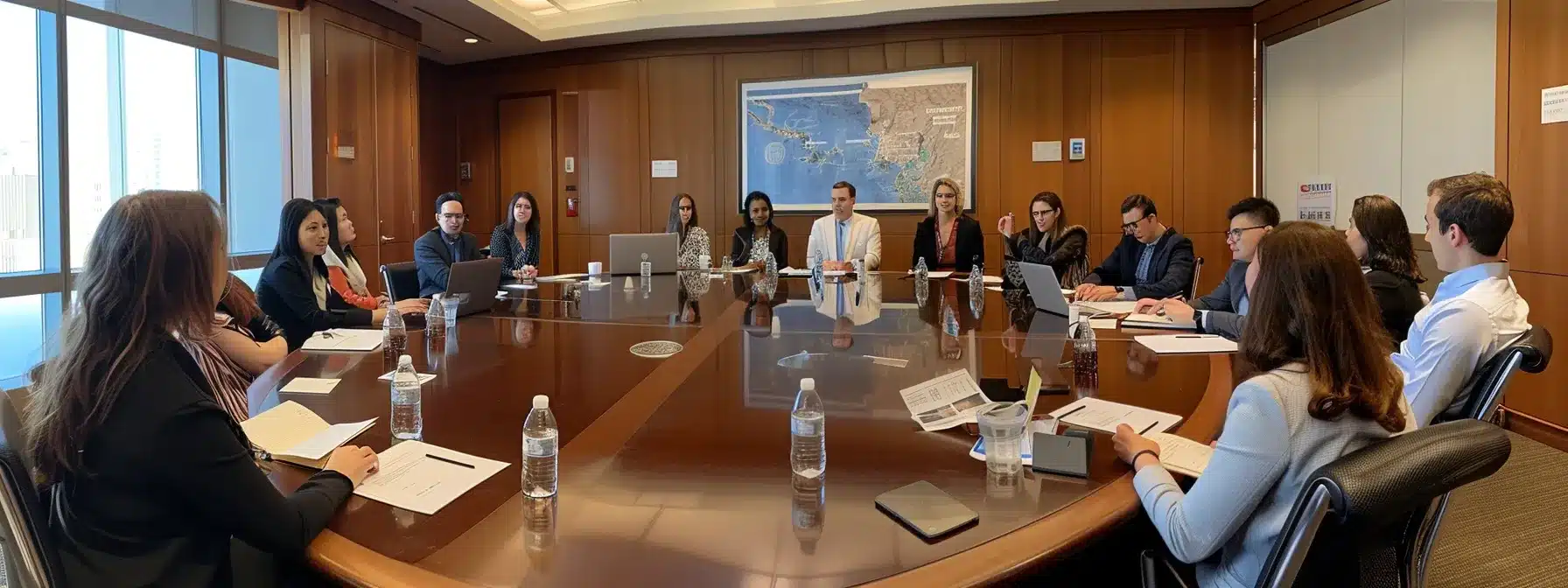Many small businesses underestimate the importance of professional support in financial risk management. Without proper risk assessment, companies can face severe disruptions that affect their stability and compliance with regulations. In this post, I will explore how risk management consultants can identify key risks, implement effective mitigation strategies, and enhance business continuity. By gaining insights into these areas, you’ll learn how to protect your business from financial uncertainties and improve overall operational stability. Engaging with this content will equip you with the knowledge needed to select the right consultant for your specific needs.
Understanding How Risk Management Consultants Strengthen Businesses

Risk management consultants play a vital role in enhancing organizational stability by providing crucial intelligence on various risks, including credit risk. Through effective accounting and valuation practices, these professionals identify potential threats and develop strategies to mitigate them. In the following sections, I will explore how consultants ensure business resilience and delve into the methodologies employed by firms like Protiviti in their risk management approach.
Explore the Role of Risk Management Consultants in Organizations
Risk management consultants are essential to fostering organizational stability by emphasizing data governance and ensuring the integrity of processes. They assess potential risks through thorough evaluation methods, which enables businesses, including those in private equity, to make informed decisions. By integrating governance frameworks that prioritize risk mitigation, these consultants help organizations build resilience, ultimately safeguarding their operations against unforeseen challenges.
Learn How Consultants Identify and Mitigate Potential Risks
Consultants identify and mitigate potential risks by conducting thorough due diligence and employing comprehensive risk management strategies. They analyze financial risk factors and evaluate organizational sustainability by assessing existing processes and controls. By providing targeted risk management consulting services, they assist businesses in developing tailored plans that address vulnerabilities and enhance resilience against future challenges:
- Conducting risk assessments to pinpoint areas of concern.
- Evaluating financial systems to ensure stability.
- Developing tailored mitigation strategies to address identified risks.
Identifying Key Risks That Threaten Business Stability

Identifying Key Risks That Threaten Business Stability
Recognizing common internal and external business risks is essential for maintaining stability. I will examine how elements like corporate culture, supply chain vulnerabilities, and fraud can impact strategy significantly. Additionally, I will delve into industry-specific challenges, using analytics to uncover unique threats that organizations face today.
Recognize Common Internal and External Business Risks
In my experience as a risk management consultant, recognizing common internal and external business risks is foundational for effective risk mitigation consulting. Internal factors like insufficient employee training or an unclear corporate policy can heighten uncertainty and expose organizations to vulnerabilities. Externally, market fluctuations or changes in regulatory environments can directly challenge a company’s risk appetite, making it crucial for businesses to engage in advisory services that identify these threats and develop comprehensive strategies to address them.
Examine Industry-Specific Challenges and Threats
In my experience, industry-specific challenges and threats often present unique risks that can undermine business stability. For instance, sectors involved in mergers and acquisitions may face heightened scrutiny concerning corporate social responsibility, which can directly impact their competitive advantage. Recognizing risks related to asset management is critical; businesses must develop robust risk advisory frameworks to navigate these complexities effectively.
Implementing Risk Management Strategies for Ongoing Stability

To maintain ongoing stability, businesses must develop effective techniques for risk mitigation planning. This includes integrating risk management into critical business processes such as procurement and information technology. In the following sections, I’ll outline strategies for assessing risk appetite and addressing liquidity risk, ensuring that organizations can navigate challenges and safeguard their operations.
Develop Effective Techniques for Risk Mitigation Planning
To effectively develop risk mitigation planning techniques, organizations should focus on conducting thorough due diligence across all operational aspects, especially regarding property and resource management. By leveraging the expertise of risk management consultants, businesses can identify key vulnerabilities while integrating stakeholder perspectives to craft comprehensive strategies. In some cases, I have seen companies successfully enhance their resilience through outsourcing specific risk management functions, thus allowing them to concentrate on their core operations and strengthen overall stability.
- Conduct thorough due diligence to identify potential risks.
- Engage stakeholders for diverse perspectives in risk assessment.
- Leverage consultants’ expertise for comprehensive strategies.
- Outsource specific risk management functions to improve focus.
Integrate Risk Management Into Business Processes
Integrating risk management into business processes is a critical step for organizations aiming for ongoing stability. In my experience as a consultant, I have seen how aligning credit risk management with strategic planning not only enhances efficiency but also solidifies a company’s operational framework. By incorporating rigorous internal audit functions, organizations can proactively identify vulnerabilities and adjust their strategies effectively, thus safeguarding their interests and ensuring long-term resilience.
Enhancing Business Continuity With Expert Risk Assessment

To enhance business continuity, performing comprehensive assessments to identify vulnerabilities is crucial. With a focus on measurement and operational efficiency, I guide organizations in developing tailored business continuity plans. This expert guidance supports innovation while ensuring that companies can effectively respond to potential risks, reinforcing their stability in a dynamic environment.
Perform Comprehensive Assessments to Identify Risks
In my role as a risk management consultant, I emphasize the importance of performing comprehensive assessments to identify operational risks that could jeopardize business stability. These assessments are foundational to effective business continuity planning, particularly in sectors like financial services where uncertainties can arise unexpectedly. By conducting thorough audits, I help organizations pinpoint vulnerabilities that may not be immediately visible, ultimately enabling them to reinforce their strategies and ensure the uninterrupted delivery of services, such as life insurance, even during adverse conditions.
Develop Business Continuity Plans With Expert Guidance
Developing effective business continuity plans is a crucial aspect of enterprise risk management. In my experience, organizations that engage with risk management consultants not only gain insights into resource allocation but also enhance their crisis management capabilities. By systematically evaluating operational risk and implementing robust asset management strategies, businesses can prepare for uncertainties and ensure they remain resilient in the face of challenges.
Evaluating the Financial Benefits of Professional Risk Management

In my experience, implementing financial risk advisory services through effective risk management can lead to significant cost savings and improved business stability. By analyzing the impact of risk reduction strategies, organizations can enhance their confidence in navigating the challenging landscape of emergencies. I will discuss the long-term financial advantages of maintaining stability, particularly in equity sectors.
Analyze Cost Savings From Risk Reduction Strategies
Analyzing cost savings from risk reduction strategies reveals how investing in infrastructure and scenario planning can significantly enhance an organization’s financial health. For instance, by integrating effective risk management practices and ensuring regulatory compliance, companies often discover that they can reduce premiums for business insurance due to lower perceived risks. I have witnessed businesses realize substantial savings over time while simultaneously improving their operational efficiency and resilience against unexpected challenges, showcasing the profound impact that risk management consultants can have on overall business stability:
Understand Long-Term Financial Advantages of Stability
Understanding the long-term financial advantages of stability is essential for any business looking to thrive. In my experience with Business Consulting Services, a well-structured risk management program not only minimizes exposure to financial crime and lawsuits but also fosters confidence among stakeholders. By prioritizing strategic management, companies can enhance their operational resilience and reduce unexpected costs over time, leading to sustained profitability and growth.
Selecting the Best Risk Management Consultant for Your Needs

To select the best risk management consultant for your needs, begin by identifying essential criteria such as expertise in climate resilience and the capability to address unique risks related to climate change and crime. It’s also crucial to compare consultant services, including their experience and track record, as these factors will directly influence your organization’s stability under the guidance of a chief risk officer.
In the following sections, I will elaborate on the specific criteria to consider when choosing a qualified consultant and how to effectively assess their services and expertise, ensuring you make an informed decision that enhances your business’s risk management approach.
Identify Criteria for Choosing a Qualified Consultant
When selecting a qualified risk management consultant, I highly recommend focusing on their experience with various risk factors, including political risk and credit assessments. An ideal consultant should not only have a strong background in managing volatility but also provide insights that can help you navigate complex situations. For instance, those with experience as expert witnesses can add significant value, as they possess specialized knowledge that facilitates effective decision-making and risk mitigation strategies tailored to your specific business needs.
Compare Consultant Services, Expertise, and Track Records
When comparing consultant services, expertise, and track records, it’s essential to focus on their understanding of specific challenges such as geopolitics and climate risk. For example, I have seen firms like FTI Consulting demonstrate effective methodologies that address complex issues which can significantly impact business stability. By evaluating a consultant’s experience in navigating these areas, you can better ascertain their ability to deliver tailored solutions that meet your organization’s unique needs.
Conclusion
Risk management consultants play a critical role in enhancing business stability by identifying potential risks and developing tailored mitigation strategies. Their expertise helps organizations navigate complex challenges, ensuring resilience against unforeseen disruptions. By integrating effective risk management into essential processes, companies not only strengthen their operational frameworks but also achieve significant cost savings. Ultimately, engaging with knowledgeable consultants allows businesses to foster long-term stability and growth in an ever-changing environment.
